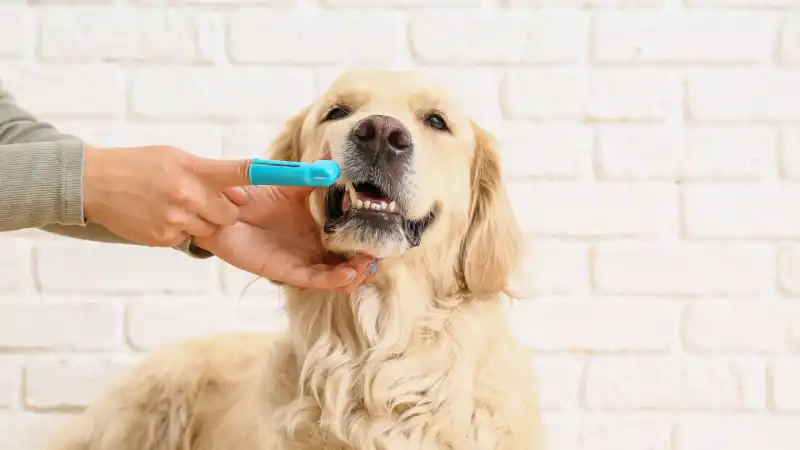Itching in Dogs: Flea Allergic Dermatitis
Flea Allergic Dermatitis is one of the most common causes of itching in cats and dogs. Here are signs & symptoms and treatment & preventative measures.

Check out the latest “FAD!” No, not the newest fashion or foodie trend, but rather Flea Allergic Dermatitis. It is caused by a pesky, bloodthirsty parasite known as the flea, and is one of the most common causes of itching, scratching, and chewing in pets.
There are over 2,500 different species of fleas around the world, with the cat flea (_Ctenocephalides felis)_being the most common flea found on domestic dogs and cats. Other less common fleas that can be seen on our pets are the dog flea (Ctenocephalides canis), sticktight flea, poultry flea, and human flea.
The Flea Life Cycle
Understanding the flea’s life cycle plays a very important part in preventing flea allergic dermatitis (FAD). An adult flea lives its entire life on the host and can survive there for more than 100 days. Once an adult female flea takes its first blood meal and mates with a male, they will start producing eggs 24-36 hrs later and continue feeding and laying between 40-50 eggs per day until death. That’s a lot of eggs and future fleas!
Around 50% of the eggs laid will be female and, as your pet moves around, the eggs will roll off the skin and be deposited in the house (in bedding and couches) and yard. Based on this, you can see how a small flea problem can quickly become a large infestation.
After a few days, the eggs will hatch into larvae, which feed on flea feces, and eventually spin a cocoon in which a pupae develops (eventually becoming an adult flea). This cocoon protects the pupae from insecticides, freezing, other environmental conditions. It can lay dormant for up to one year until conditions are right for the adult flea to emerge. Typically, fleas emerge when there is warm body heat or vibrations nearby, and they thrive in warm, humid environments.
Visit the CDC for a life cycle diagram.
Signs and Symptoms of Flea Allergic Dermatitis
Once an adult flea hatches, it will begin to search for a host and, when found, will begin feeding immediately. It is the bite from the flea that triggers FAD in some pets. Once bitten, the flea’s saliva, which contains many different proteins and enzymes, comes in contact with the pet’s skin, leading to irritation and an allergic response.
Clinical signs of FADcan vary depending on the magnitude of the infestation and the pet’s immune response.
Common signs include:
Intense licking, chewing, and/or biting of the skin.
Restlessness and discomfort.
Small and red raised 1-3mm papules (bumps or pimple-like lesions) may be seen on the head, neck, lower back, and inner thighs.
Hot spots (red, circular skin lesions that often ooze) and other scabbing or crusting lesions.
Hair loss or broken hairs.
Flea excrement (poop) that looks like a dark, gritty substance may be found on the skin.
Live fleas may actually be seen. However, a pet with true flea allergy can itch for weeks after just one flea bite and long after the fleas are gone. This is why FAD can be confusing for pet owners and difficult to diagnose.
Diagnosis of Flea Allergic Dermatits in Pets
Diagnosis of FAD is typically made by observation of fleas or finding “flea dirt” or poop. Although it may look like dirt, it can be differentiated by using a moist paper towel or white gauze pad and rubbing the debris on the paper (A flea comb is commonly used to collect the debris). If it is poop, it will smear red, as it is digested blood, but dirt will not change color.
Typically, in the FAD patient, treatment involves killing the fleas and treating any secondary irritation and/or infections on the skin. Antibiotics may be needed to treat skin infection (pyoderma). A steroid-type anti-inflammatory may be needed to help stop the itching and quell the irritation in more severe cases of FAD.
Treatment and Prevention of Flea Infestation
Killing the fleas on your pet is the first step in a flea treatment plan. The second involves removing the infestation from the household. And, for flea allergic pets, the most important part of the plan is prevention.
Remember, female fleas can produce up to 50 eggs per day, so by the time you make it to the veterinarian, the eggs have already been spread throughout your household and are turning into larvae and pupae, getting new adults ready to reinfest your pet or your family.
Talk with your veterinarian about which flea product is best for killing and preventing fleas, as well as for long-term eradication in the environment. There are many flea products on the market and most of them can help prevent additional parasites at the same time. Your veterinarian will be the best source of information on which product will be best for your pet and your region. Be sure to let them know if there are multiple animals living in your house, as ALL of them will need to be treated in order to stop the cycle of infestation.
Here are a few more reasons to keep fleas out of your home:
They can also bring other parasites along with them, such as tapeworms (Dipylidium caninum).
If left untreated and continue feeding, they can cause blood loss or anemia.
Fleas can cause other infectious diseases in pets and people depending on the flea species.
Flea prevention is an essential part of your pet’s care and helps prevent flea allergies and infestations. AKC Pet Insurance (underwritten by Independence American Insurance Company) offers wellness coverage that provides reimbursement for eligible routine and preventive care expenses, like your dog’s flea and tick prevention. Wellness coverage is not subject to waiting periods, coinsurance, deductible, or annual limit, and can be added to base Accident and Illness plans.
If you want to learn more about wellness coverage or get a pet insurance quote, check out AKC Pet Insurance's quote tool or give them a call at 866-725-2747!
Dr. Preston Turano graduated from the University of Illinois College of Veterinary Medicine in 2002. Since that time, he has been a Veterinarian, Medical Director, and Practice Owner.
READ MORE ARTICLES

